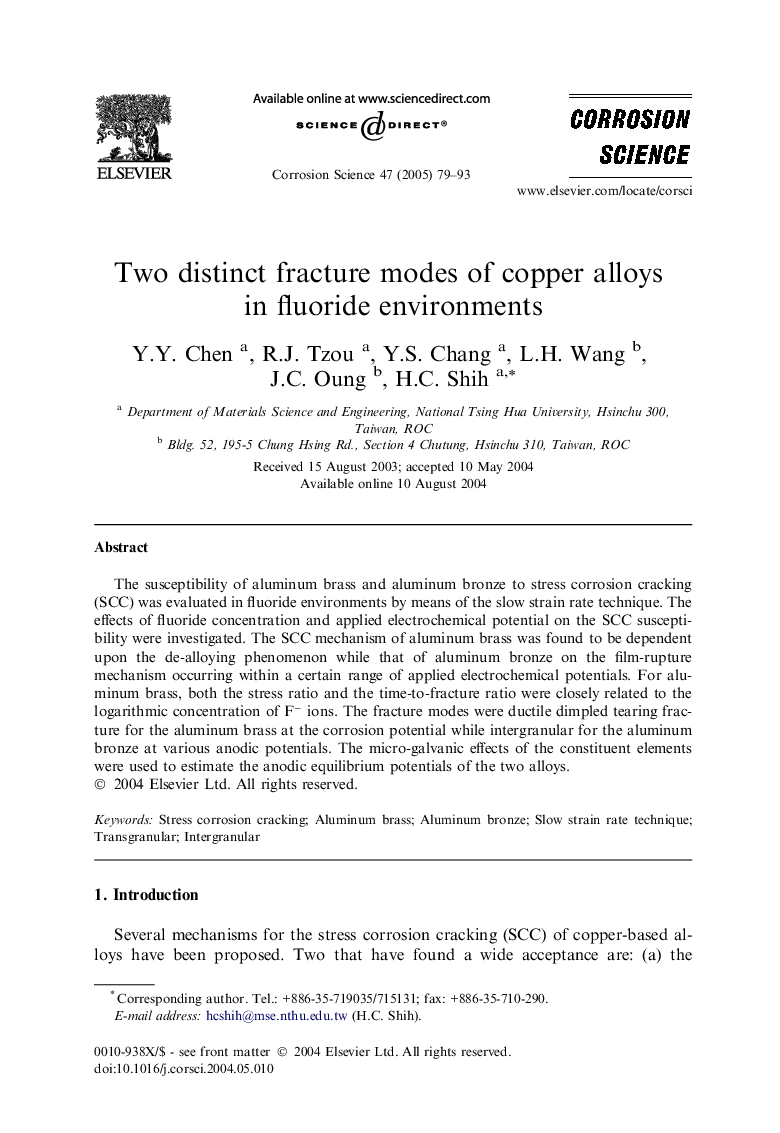| Article ID | Journal | Published Year | Pages | File Type |
|---|---|---|---|---|
| 10628610 | Corrosion Science | 2005 | 15 Pages |
Abstract
The susceptibility of aluminum brass and aluminum bronze to stress corrosion cracking (SCC) was evaluated in fluoride environments by means of the slow strain rate technique. The effects of fluoride concentration and applied electrochemical potential on the SCC susceptibility were investigated. The SCC mechanism of aluminum brass was found to be dependent upon the de-alloying phenomenon while that of aluminum bronze on the film-rupture mechanism occurring within a certain range of applied electrochemical potentials. For aluminum brass, both the stress ratio and the time-to-fracture ratio were closely related to the logarithmic concentration of Fâ ions. The fracture modes were ductile dimpled tearing fracture for the aluminum brass at the corrosion potential while intergranular for the aluminum bronze at various anodic potentials. The micro-galvanic effects of the constituent elements were used to estimate the anodic equilibrium potentials of the two alloys.
Related Topics
Physical Sciences and Engineering
Materials Science
Ceramics and Composites
Authors
Y.Y. Chen, R.J. Tzou, Y.S. Chang, L.H. Wang, J.C. Oung, H.C. Shih,
